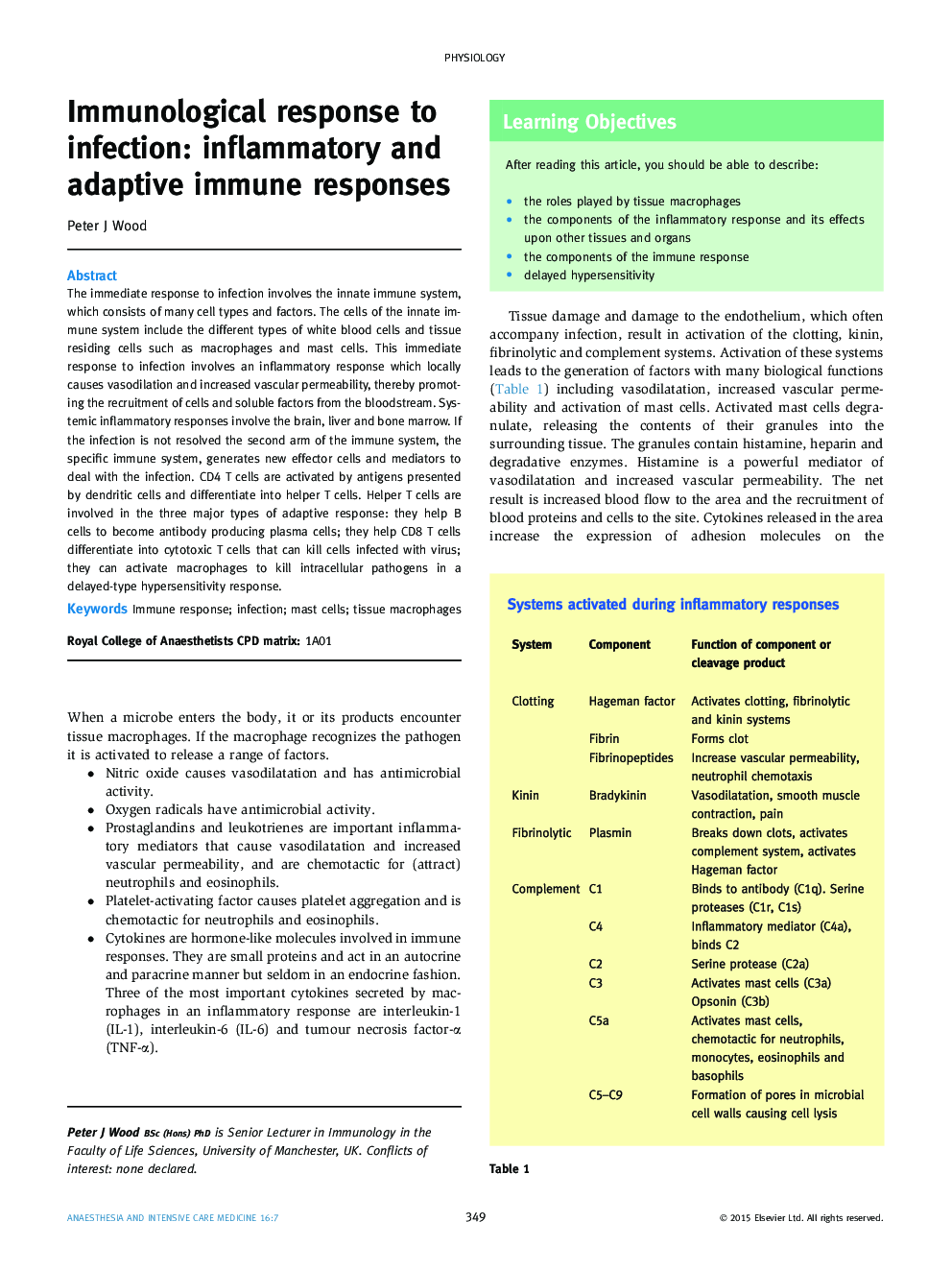| Article ID | Journal | Published Year | Pages | File Type |
|---|---|---|---|---|
| 2742193 | Anaesthesia & Intensive Care Medicine | 2015 | 4 Pages |
The immediate response to infection involves the innate immune system, which consists of many cell types and factors. The cells of the innate immune system include the different types of white blood cells and tissue residing cells such as macrophages and mast cells. This immediate response to infection involves an inflammatory response which locally causes vasodilation and increased vascular permeability, thereby promoting the recruitment of cells and soluble factors from the bloodstream. Systemic inflammatory responses involve the brain, liver and bone marrow. If the infection is not resolved the second arm of the immune system, the specific immune system, generates new effector cells and mediators to deal with the infection. CD4 T cells are activated by antigens presented by dendritic cells and differentiate into helper T cells. Helper T cells are involved in the three major types of adaptive response: they help B cells to become antibody producing plasma cells; they help CD8 T cells differentiate into cytotoxic T cells that can kill cells infected with virus; they can activate macrophages to kill intracellular pathogens in a delayed-type hypersensitivity response.
